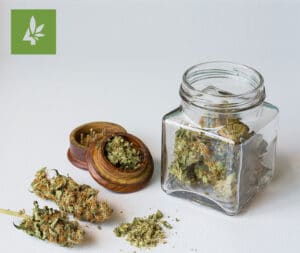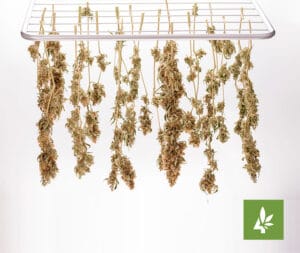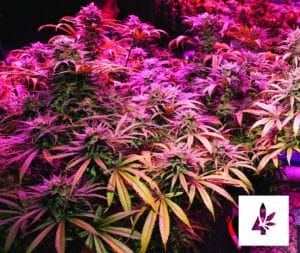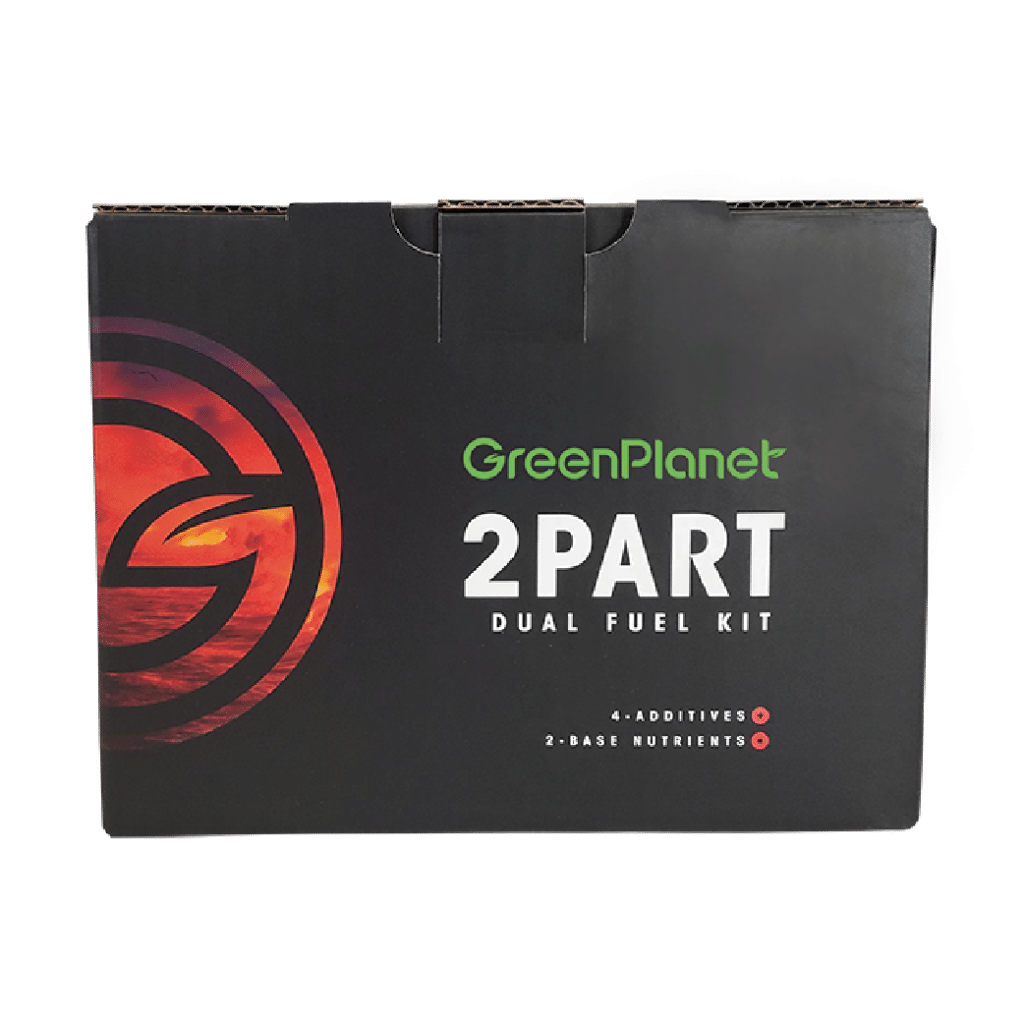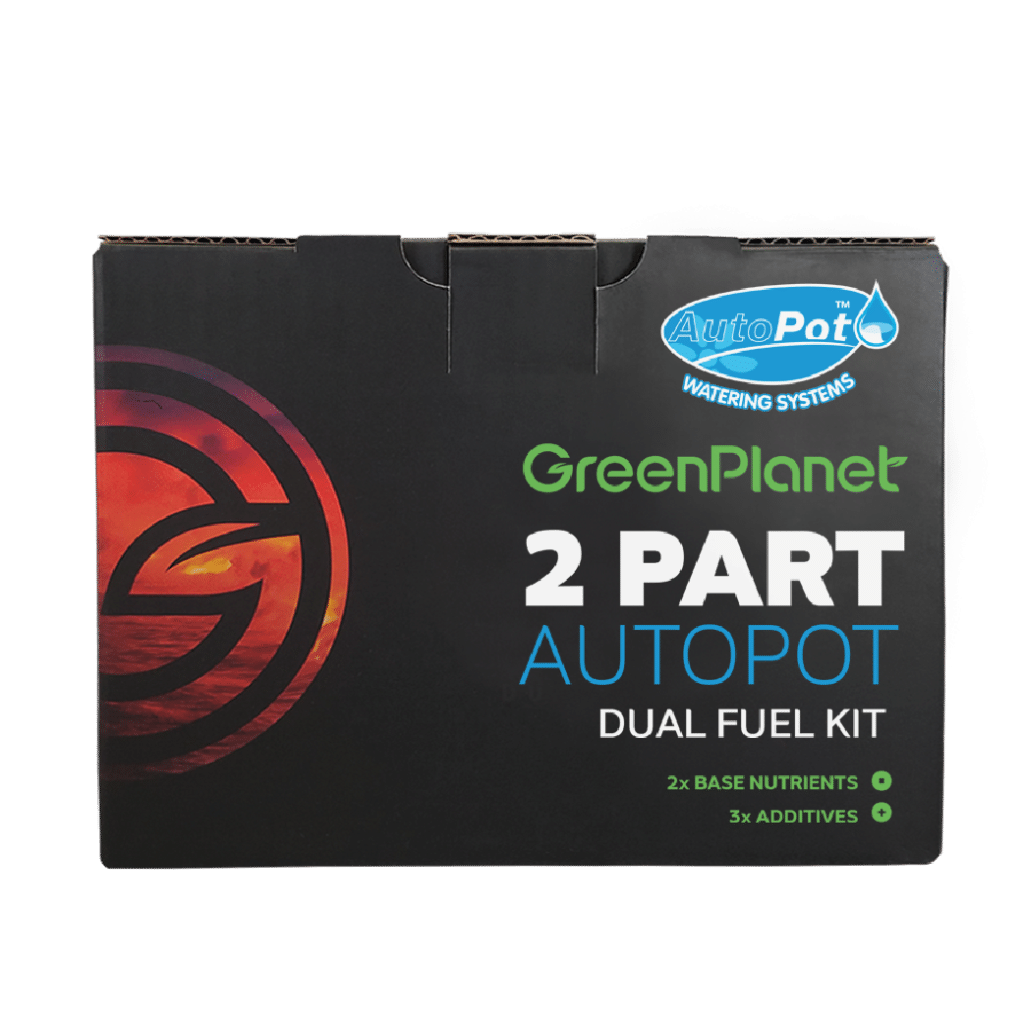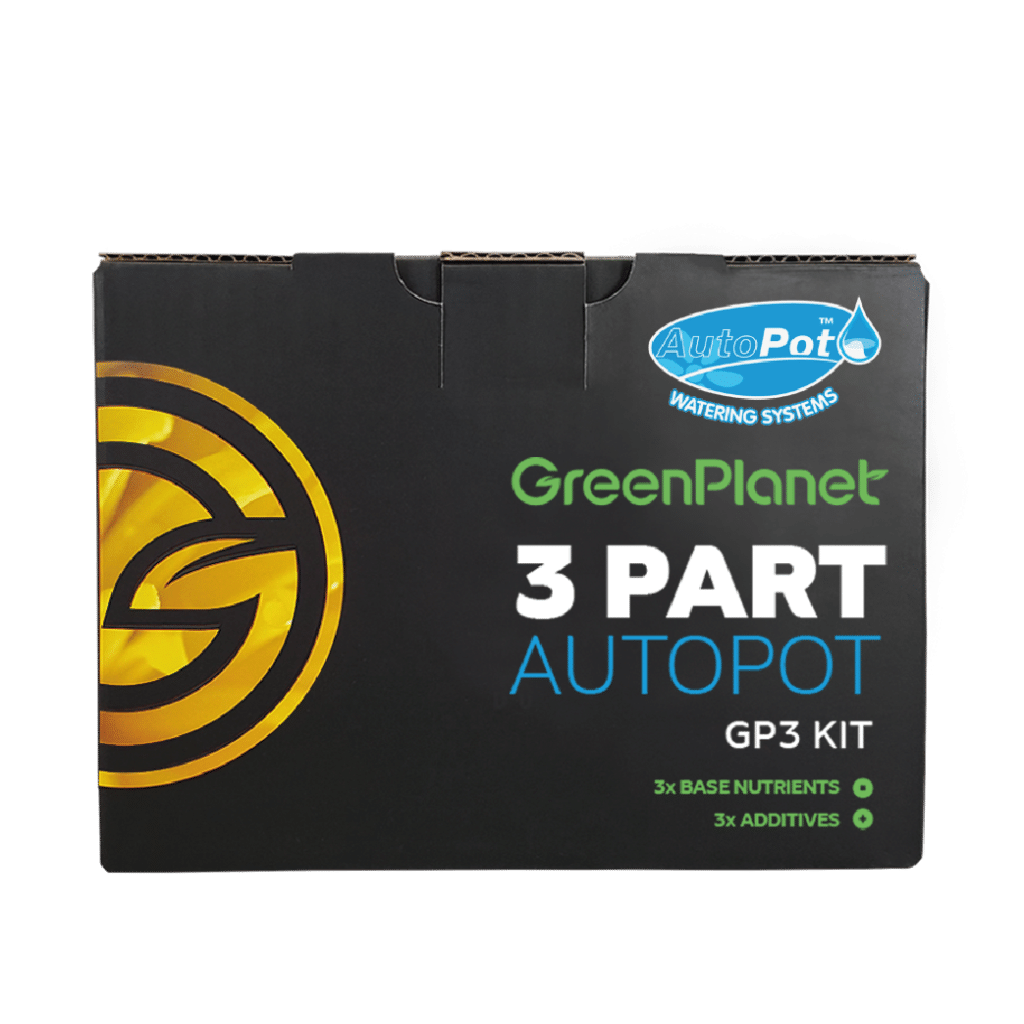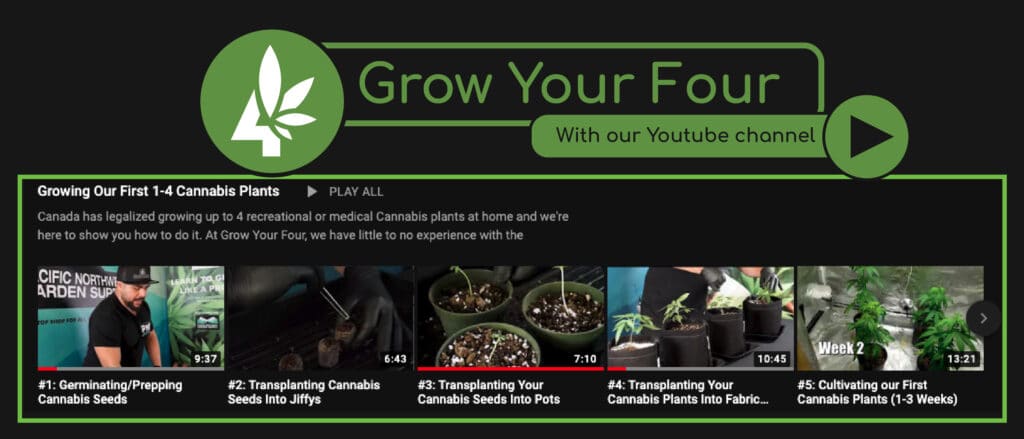By now, your cannabis seedlings should be fully sprouted. If they have roots, have stretched, or have multiple sets of “true leaves”, they are ready to begin the pre-vegetative growing stage.
Growers often want to skip this stage and transplant seedlings directly into large pots. However, transplanting cannabis seedlings into small, pre-vegetative pots can be useful in establishing a small root zone before beginning the stages of aggressive growth. Remember, seedlings are still extremely vulnerable to stress. Overwatering, underwatering, excessive heat, cold, and light can all be influencing factors that produce struggling, slow-growing plants. By providing young plants with pre-vegetative parameters like small pots, stable lighting, and ideal day/night temperatures, new growers can be assured that their new plants will have the best chance of success.
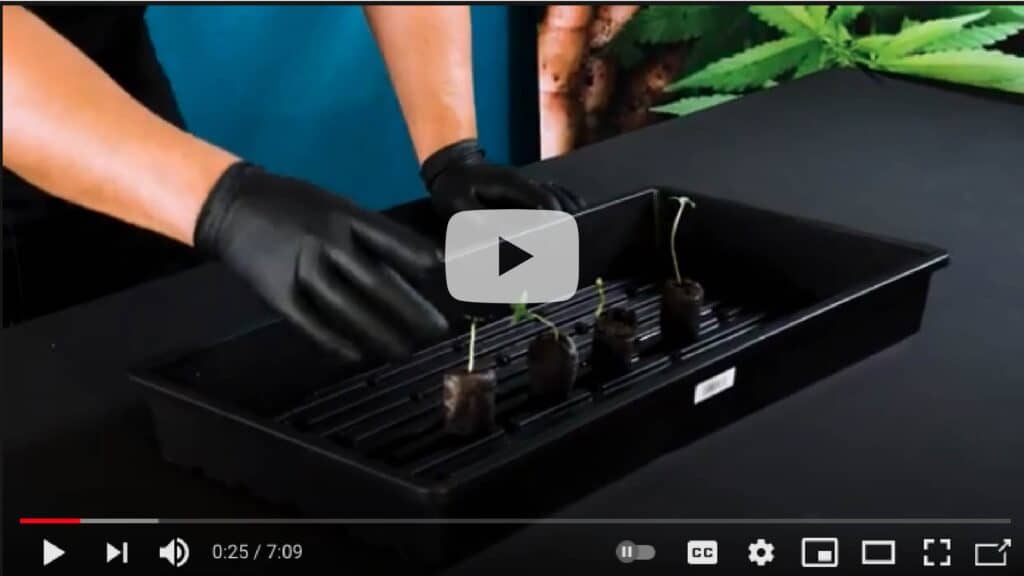
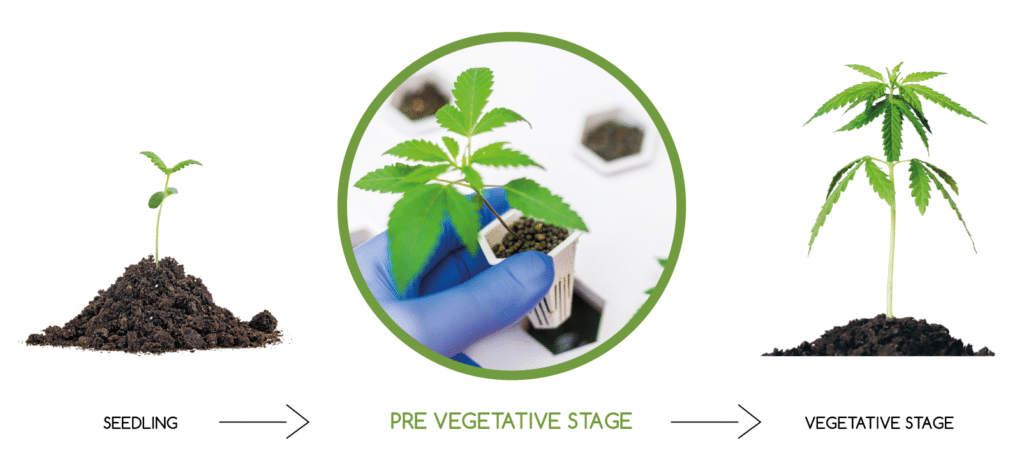
Ready to get growing? Read the following article to learn more about transplanting cannabis into small pots for the pre-vegetative stage.
Three Methods for Identifying if your Plant is Ready to Begin the Vegetative Stage
There are three methods for deciding whether or not your seedlings are ready to be transplanted.
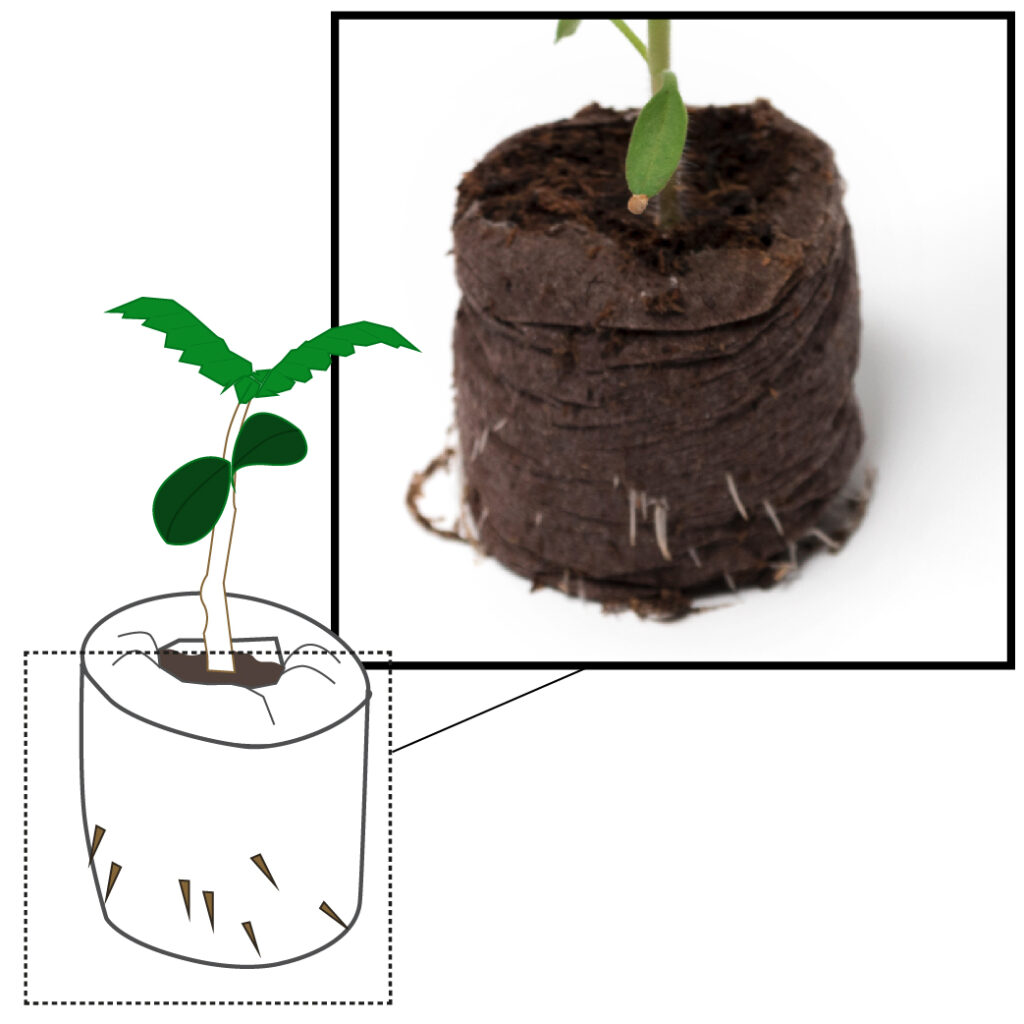
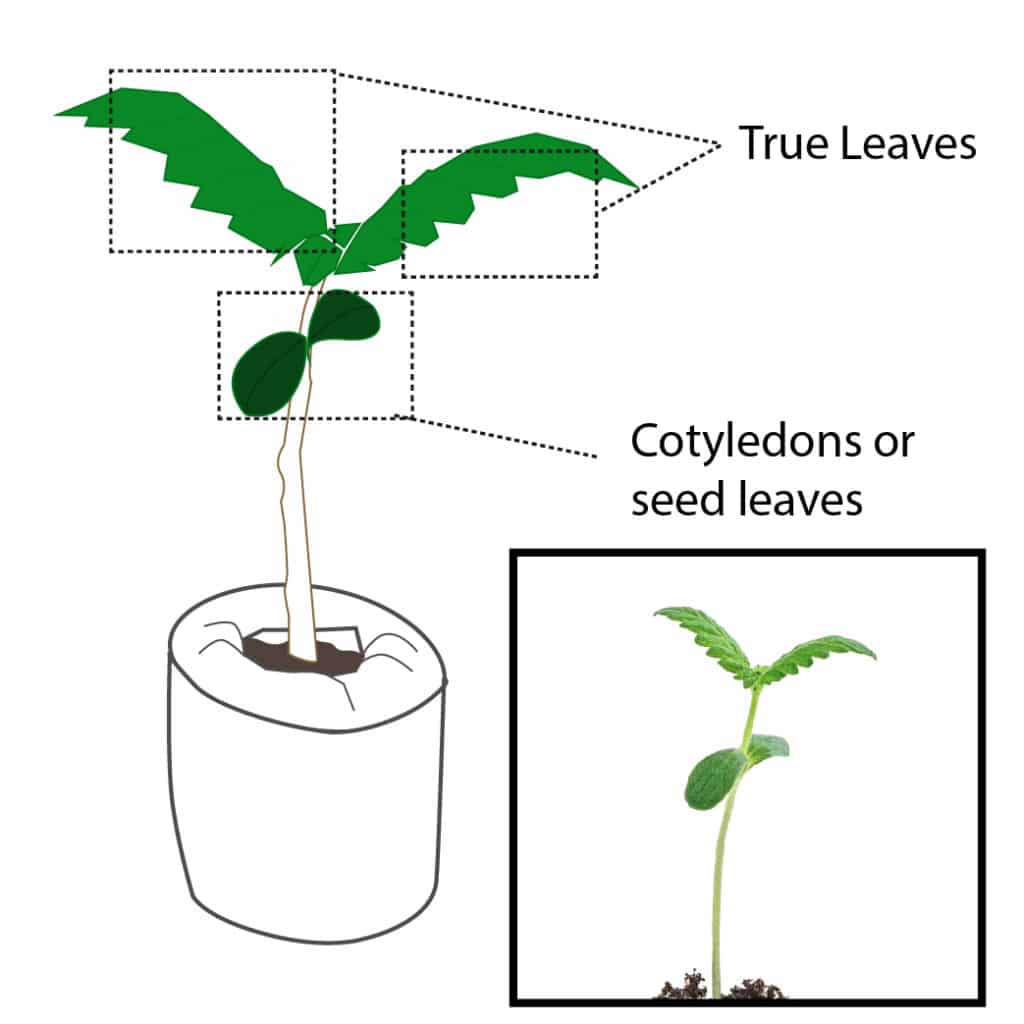
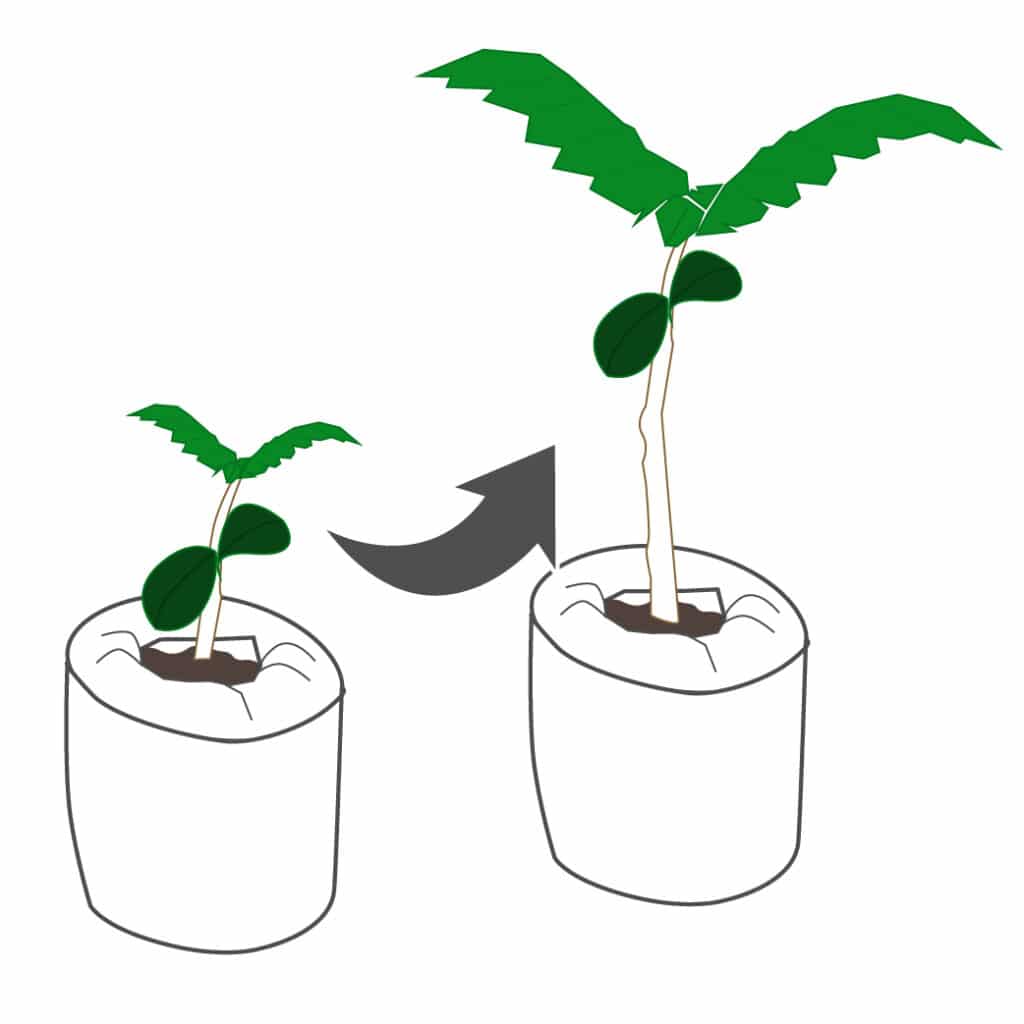
Rooted Seedlings
The first is the simplest: if roots are exiting in your seedling’s jiffy pellet, they are ready to be transplanted. Root expansion is a sign of good things to come. However, this also means that your plants will require more water and nutrients over the coming weeks.
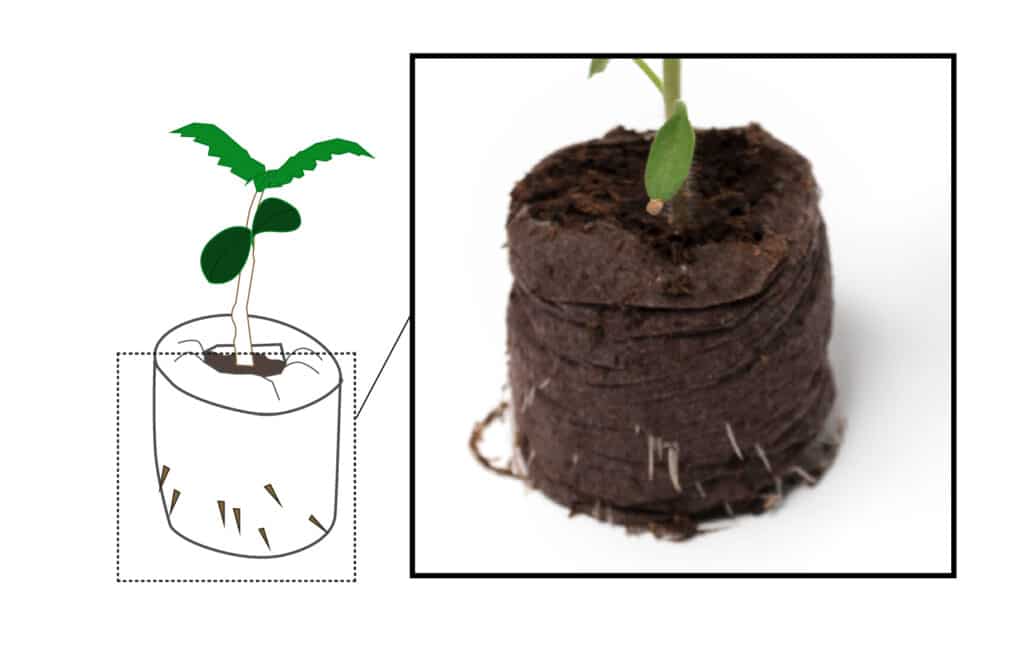
Seedlings with “True-Leaves”
Roots may not always exit a jiffy pellet during the germination stage. So, growers must also examine the leaf structure of their plants. For example, the presence of “true leaves(Cotyledons)” is a good indicator of plant vitality and growth. Unlike the “sucker leaves” which first emerge from the seed shell, true leaves will be much larger, resemble typical cannabis leaves, and indicate future growth, progression, and plant establishment. Seedlings with true leaves are also ready to enter the pre-vegetative phase of growth.

Stretched Seedlings
Some seedlings tend to rapidly stretch. Sometimes called spindly, or “leggy” seedlings, these plants have soft and tender stalks and will require some extra care. However, even in the absence of other determinants like true leaves or roots, stretchy seedlings are a solid indicator of plant growth. These seedlings, along with others displaying these characteristics, will be ready to move into the pre-vegetative stage of growth.
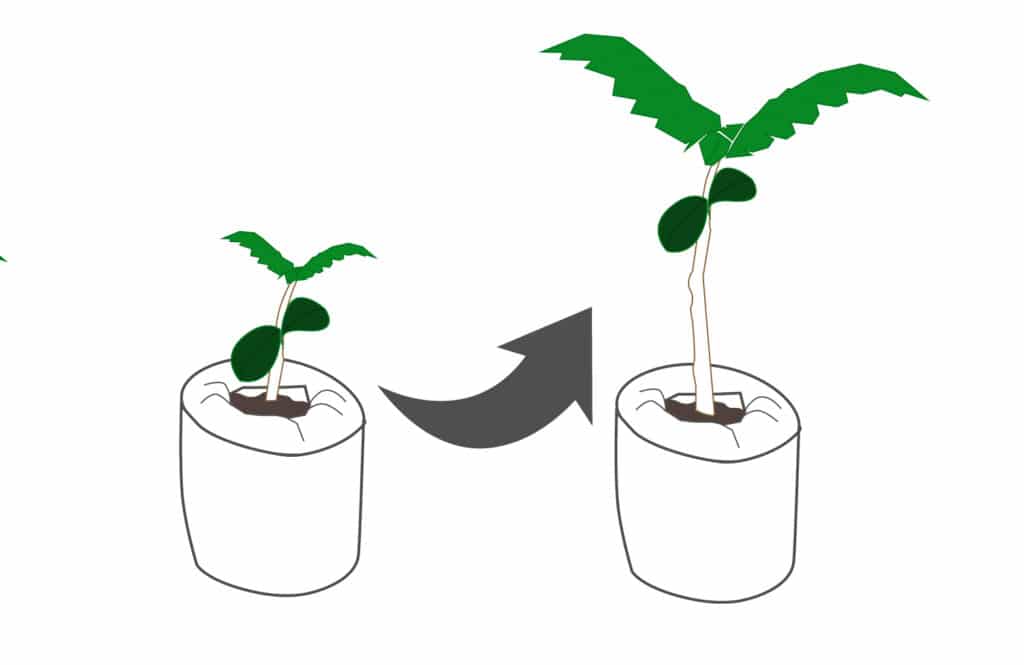
Step #1: Examine Your Seedlings
Using the three methods indicated above, examine your Cannabis plants to see if they’re ready to be transplanted.

Step #2: Obtain Containers and Potting Soil
Choose a small container/pot and high-quality potting soil for this process. A small pot will encourage steady, realistic growth during the pre-vegetative stage. Seedlings also have a small, unestablished root zone. So, by transplanting them into a smaller container, growers can avoid all the expected issues that come with overwatering small plants in large pots. Hasty growers that transplant seedlings into large containers have a tendency to overwater them upon transplant, but with an insufficient root zone, these plants quickly drown in the excess moisture of muddy, over-irrigated medium.
For first-time growers, high-quality potting soil is a must. There is a large debate surrounding “the best” system for growing cannabis. Hydroponic systems certainly have their advantages. But simply put, growing in soil is the easiest way to ensure a successful harvest. Soil-based mediums like peat moss are extremely porous – this means they absorb water and drain easily. And unlike hydroponic mediums, soil can easily be enriched with an array of organic, mineral, or mix-method nutrient programs. In short, soils are the most predictable and simplest system to manage. So, for new growers, we highly recommend investing in high-quality potting soil for your first attempt at growing cannabis. Here are some of the features to look for in both containers and high-quality potting soil:
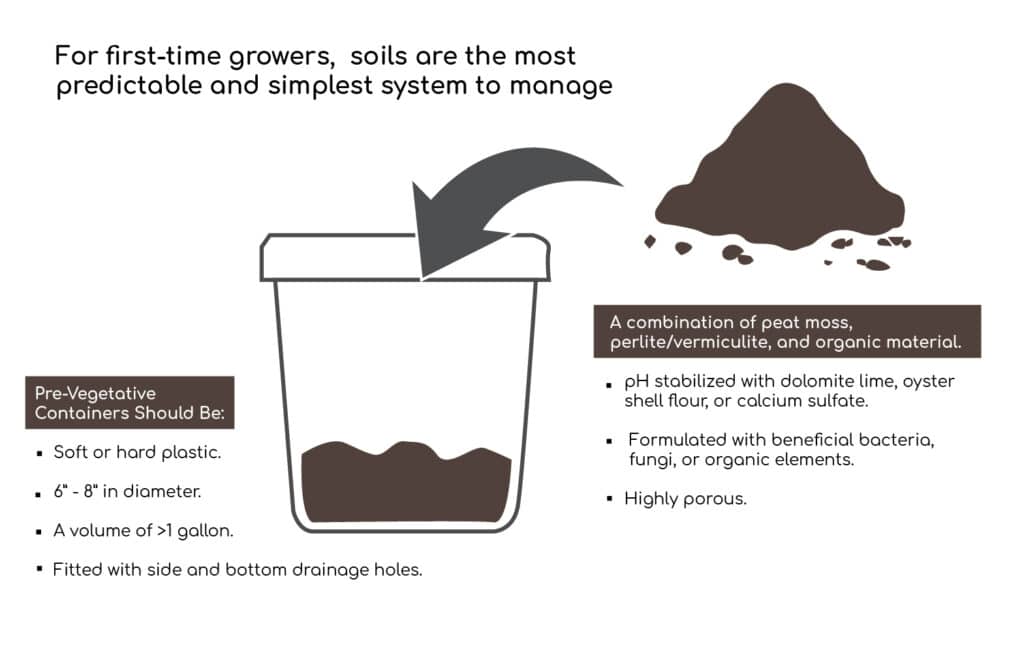
Step #3: Transplant Seedlings into Containers
If you’ve examined your seedlings and obtained containers and potting soil, it’s time to transplant your plants into their pre-vegetative homes. Take each container and fill them with a small amount of potting soil, approximately ⅓ or ¼ of the total volume of the pot. Then place the jiffy pellet into the pot and fill the surrounding area with soil. “Leggy” or stretched seedlings can often present new growers with a challenging transplant. If you happen to have one or more seedlings that have stretched, bury the leggy stalk of your seedling deeper into the soil. This will support the soft stalk of your seedling, while also stabilizing the canopy height of your entire crop.
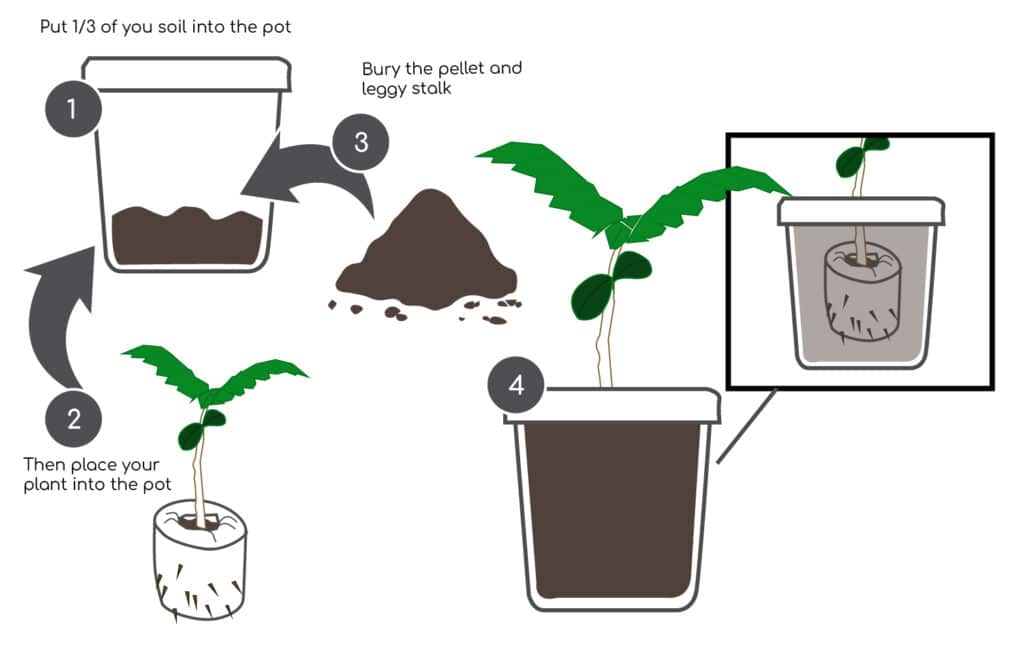
Step #4: Establish a Vegetative Environment and Feeding Schedule
Just like the germination stage, plants have specific needs during the pre-vegetative phase of growth. Here are some of the most important pre-vegetative parameters to put in place:
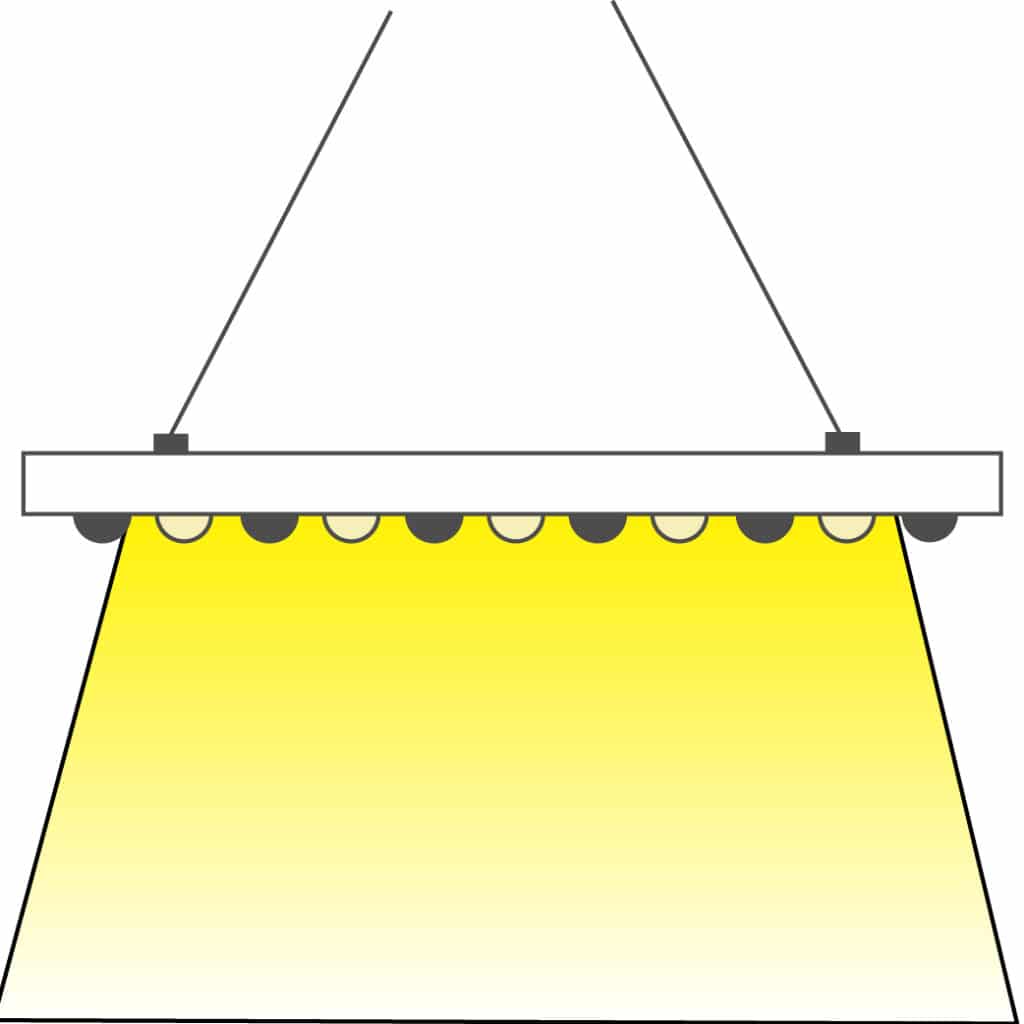
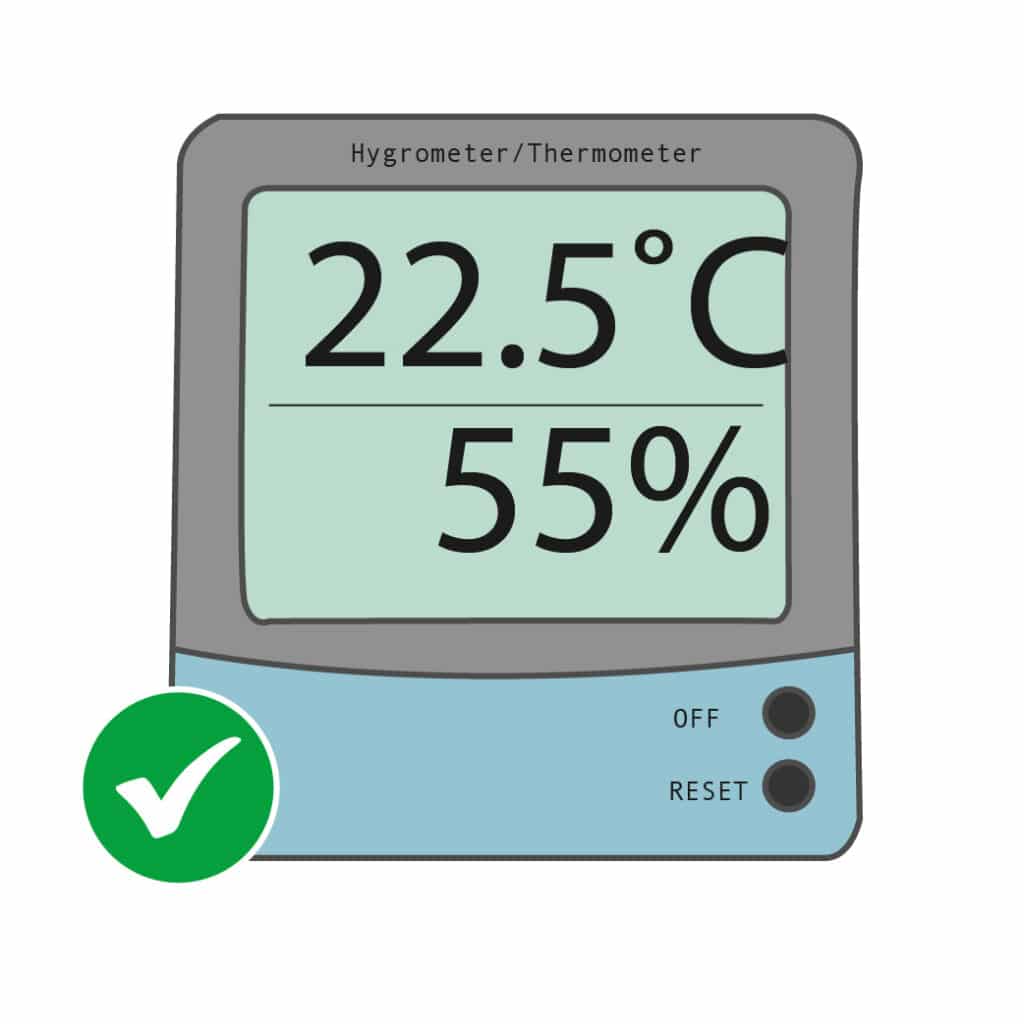
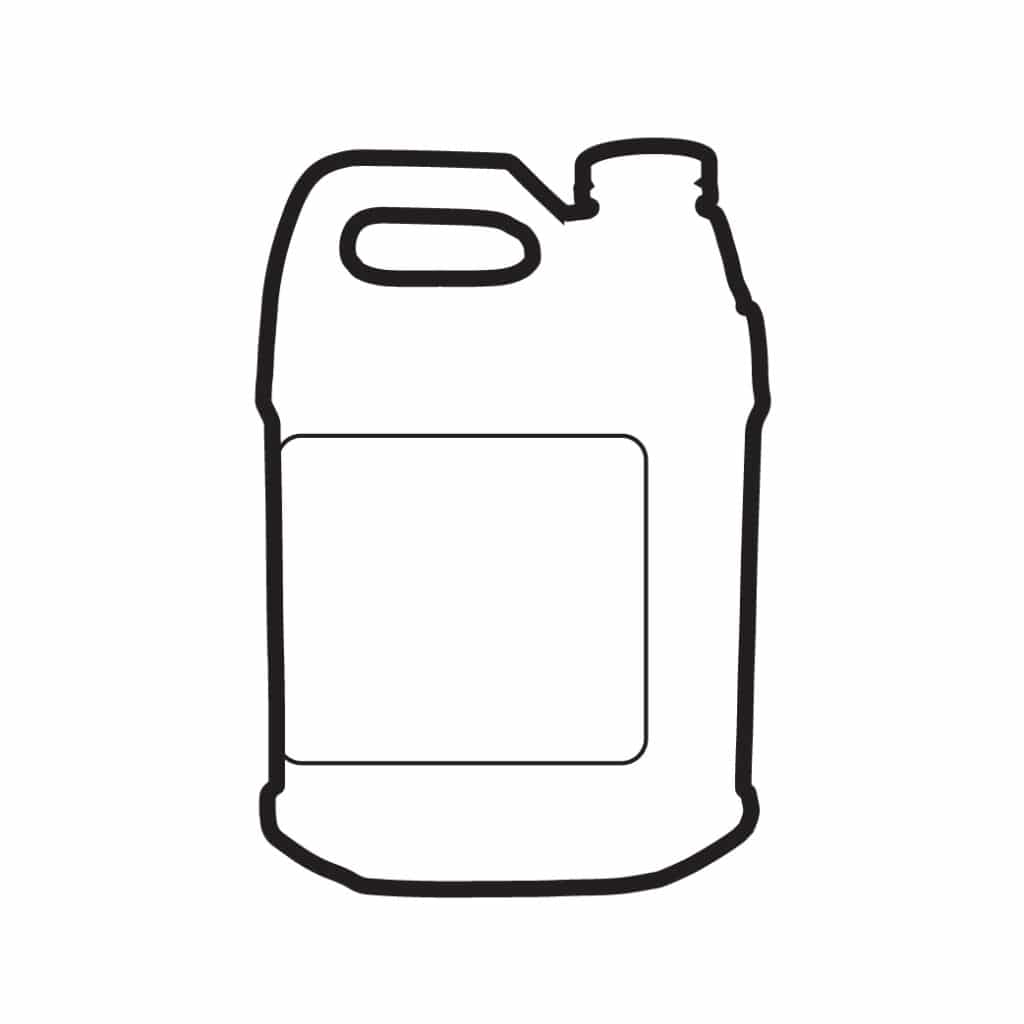
Lighting
The same low-wattage fluorescent or led light lighting that was used for germinating seeds can be used to support plants during the pre-vegetative stage of growth – just make sure these lights are close enough to your plants (approximately 6”- 10” away) to avoid further stretching. However, if you happen to move to HID lighting during this stage, consider the opposite approach to lighting height. As still unestablished plants, seedlings are extremely vulnerable to light stress. So, give your plants a canopy threshold of at least 30” to avoid light bleaching or leaf damage. Set your plants under your light of choice and install an indoor lighting timer with a photoperiod of 18 hours of light and 6 hours of darkness.
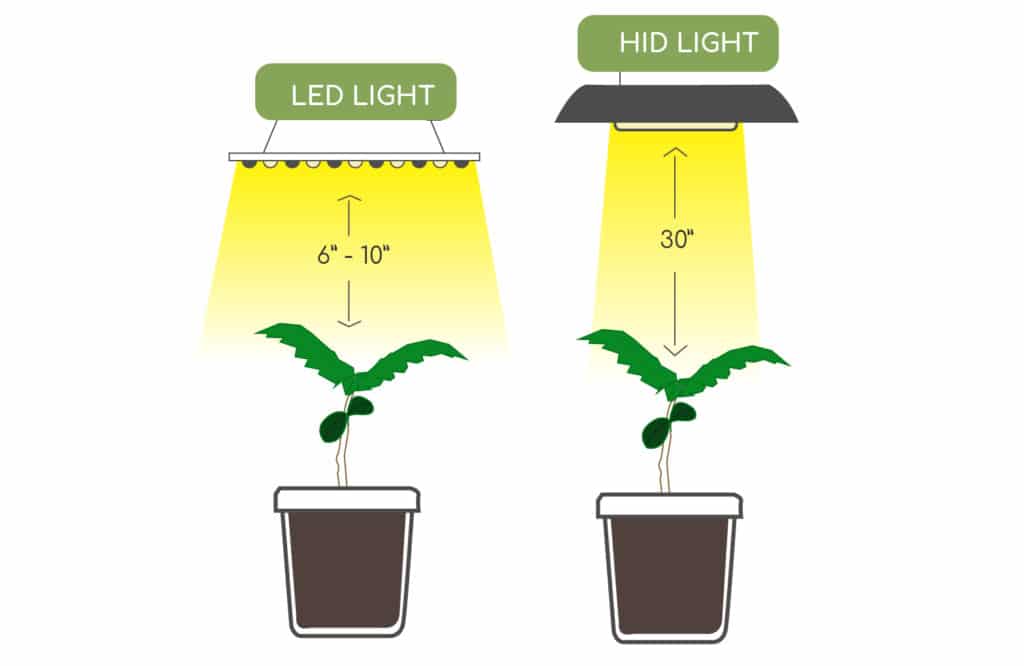
Environment
For the best outcome, attempt to keep your seedlings in an environmental range of 70-75 degrees Fahrenheit (21-24C) and a minimum of 50-60% relative humidity. Digital thermometers/hygrometers can help manage these environmental ranges. Misting your plants is also a good solution for increasing humidity during this stage.
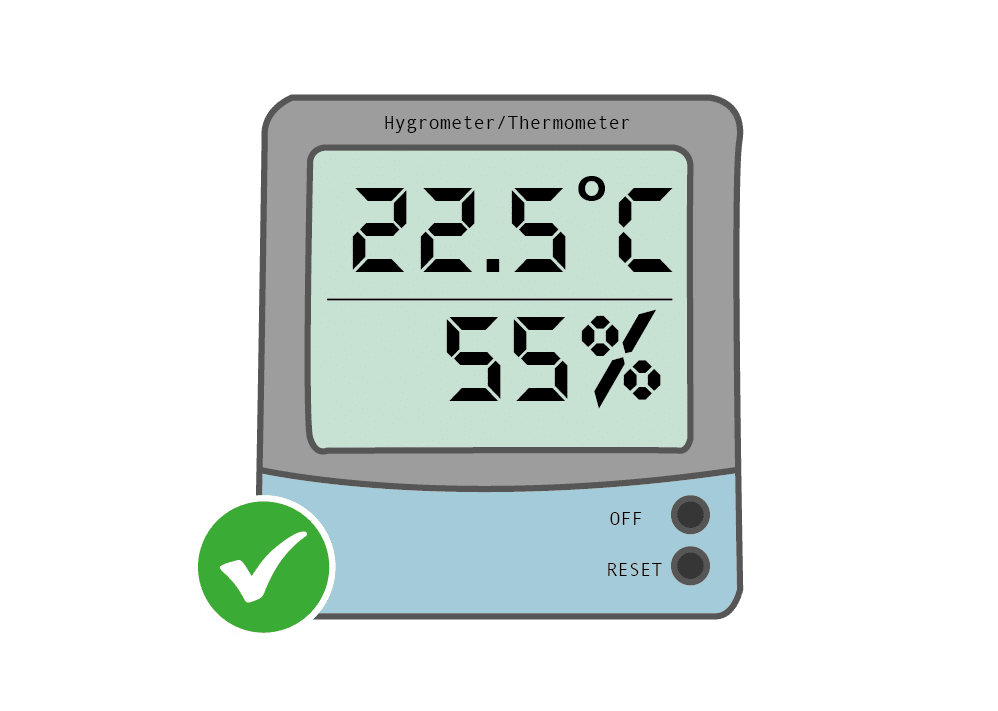
Cannabis Plant Nutrients
As roots expand from your seedlings, the need for plant food will increase. This transition period from germination to pre-vegetative is a great time to begin a scheduled feeding program. “Base Nutrients”, or nutrients that give your plants an array of micro and macronutrients, root building supplements, plant hormones, and vitamins are all recommended for the production of top-tier cannabis. Some or all of these supplements can be purchased as a package in nutrient kits or a collection of fertilizers specifically designed to assist in the cultivation of four cannabis plants.
Check out the GreenPlanet Nutrients Starter Kits available below:
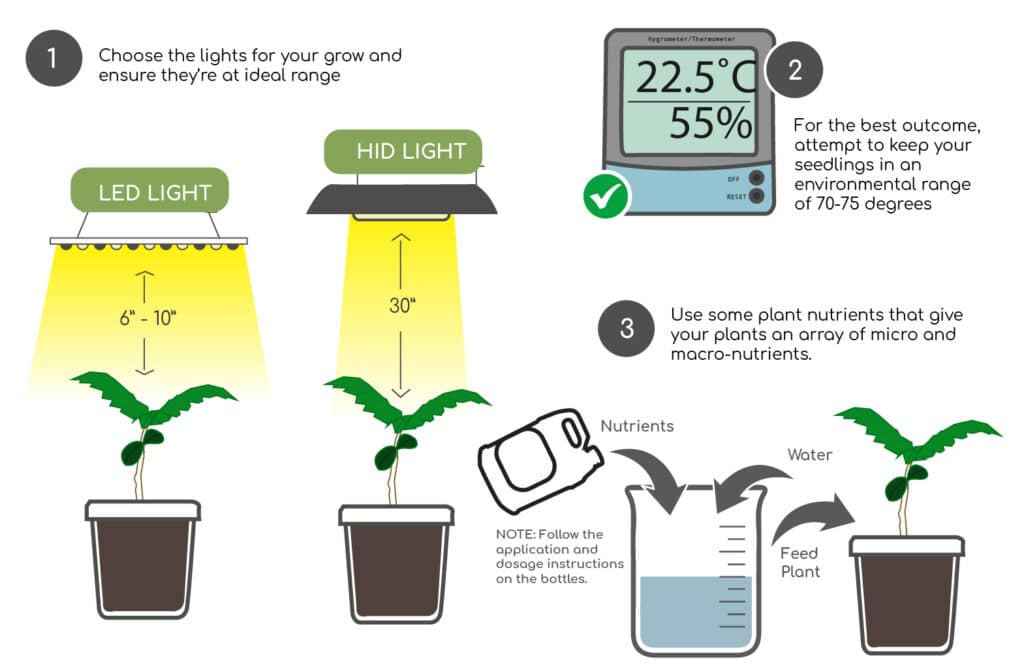
Step #5: Monitor Your Vegetative Plants
Expect your plants to be in the pre-vegetative stage for approximately 10-14 days. But what does healthy growth look like in the pre-vegetative stage? Here are some of the positive things to look out for during this phase:
- Increased Metabolism: You’ll notice that the soil drys out quicker and your plants need to be irrigated more often.
- Broader Leaves: Soon the true leaves of your plant will become broader, darker, softer, and more in number.
- Vertical Growth: Expect a daily increase in plant height.
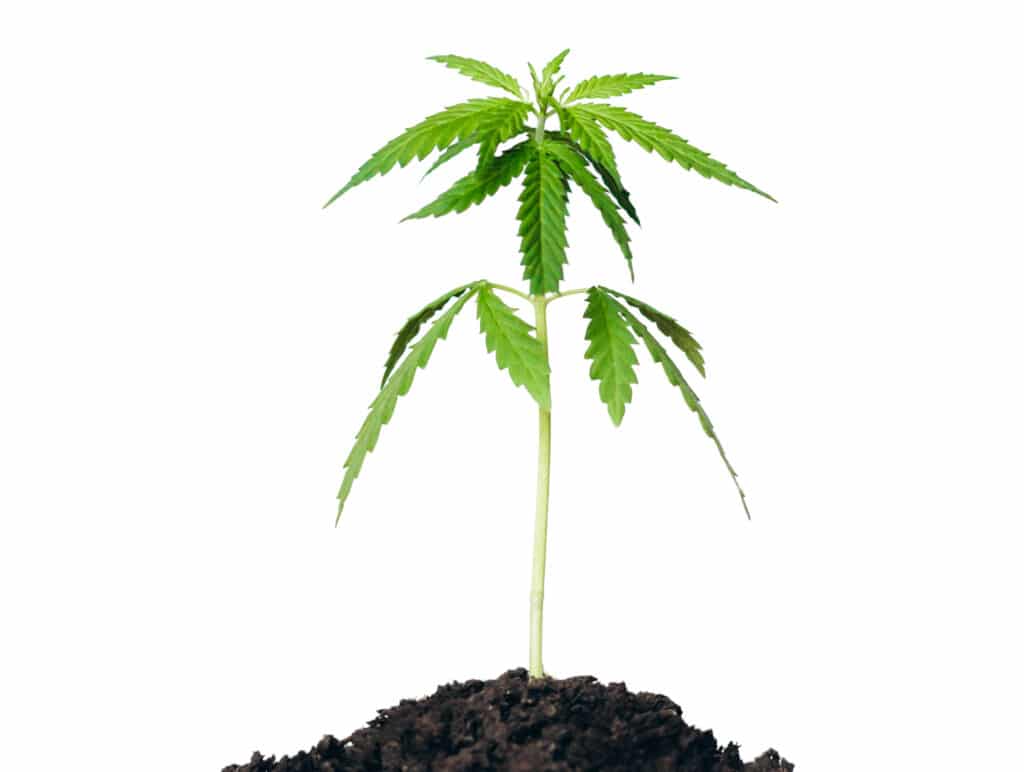
If you notice the development of these characteristics over the next few weeks, your plants have likely established a root zone in their new, pre-vegetative homes and soon you’ll be able to change protocols and enter the stage of fast, aggressive growth.
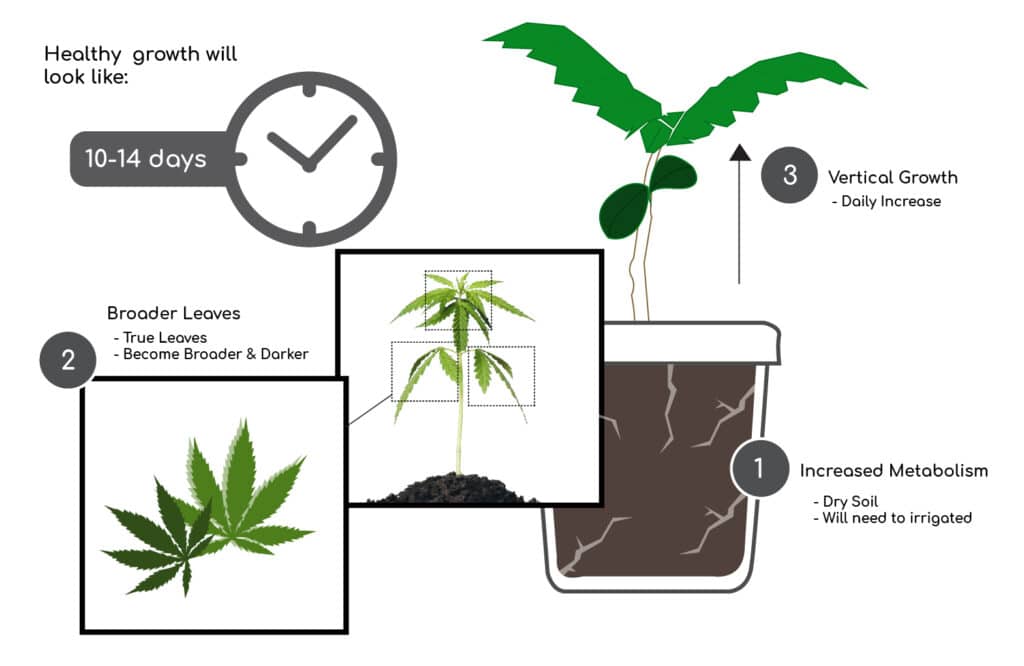
Buy Items Mentioned In This Blog:
Join us for more information about growing cannabis at home! For more tips on transplanting your cannabis seedlings into pots, contact our team at Grow Your Four.
Read More
- Tips on Curing Homegrown Cannabis
 After your cannabis is dried and processed, it’s time to think about curing, burping, and re-humidifying your crop to the perfect smoking and vaping consistency.
After your cannabis is dried and processed, it’s time to think about curing, burping, and re-humidifying your crop to the perfect smoking and vaping consistency. - How to Trim Cannabis to Perfection in 7 Easy Steps
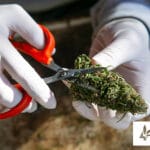 It’s true – trimming cannabis is one of the most monotonous jobs in the garden. But much the like process of knitting handmade fabrics, hand-trimming
It’s true – trimming cannabis is one of the most monotonous jobs in the garden. But much the like process of knitting handmade fabrics, hand-trimming - Grow Your Four’s Guide to Harvesting and Drying Cannabis
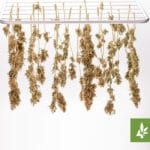 By the end of week 8, your plants will likely be ready for harvest. Harvesting cannabis involves the important process of carefully drying plants to
By the end of week 8, your plants will likely be ready for harvest. Harvesting cannabis involves the important process of carefully drying plants to

